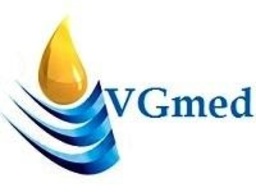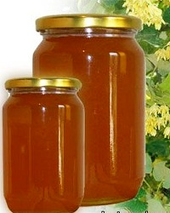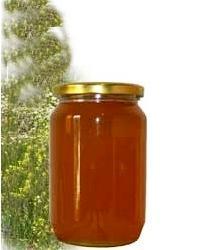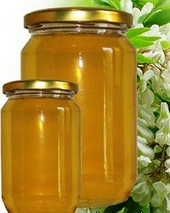HACCP & ISO 9001 Integrated Systems Certification
The application of HACCP is compatible with the implementation of quality management systems, such as ISO 9001, and is the system of choice in the management of food safety within such systems. ISO 9001 certification demonstrates that quality and customer satisfaction are priorities for your organization. ISO 9001 certification provides proof of your commitment to quality and the continuing improvement of your systems.
HACCP audits are conducted using auditor checklists based on Codex Alimentarius as well as local statutory and regulatory requirements. Food processors can be certified to ISO 9001 simultaneously while an audit is conducted of their HACCP plans, resulting in certification for both. To provide food processors dual certification, ICS has designed a unique combined ISO/HACCP audit in preparation for the ISO 22000 standard for the food industry.
Benefits of HACCP & ISO 9001 Integrated Systems Certification
Certification of the integrated HACCP & ISO 9001 system results in two certificates which demonstrates your commitment to quality and continuous improvement
Reduced auditing time that would normally be required to obtain the ISO 9001 and HACCP certifications seperately
HACCP and ISO 9001 are well known internationally and enhances credibility of your food safety and quality assurance systems for current and potential clients around the globe
Companies who also sell products/services unrelated to food or pharmaceuticals, can expand their scope for ISO 9001 certification to include the quality assurance system for those other products/services.
What is HACCP?
Hazard Analysis and Critical Control Points (HACCP) is a systematic preventive approach to food and pharmaceutical safety that addresses physical, chemical, and biological hazards as a means of prevention rather than finished product inspection. HACCP is used in the food industry to identify potential food safety hazards, so key actions at Critical Control Points (CCPs) can be taken to reduce or eliminate the risk of the hazards being realized. The system is used at all stages of food production and preparation processes including packaging and distribution.
A forerunner to HACCP was developed in the form of production process monitoring during World War II because traditional "end of the pipe" testing wasn't an efficient way to identify artillery shells that would not explode. HACCP itself was conceived in the 1960s when the US National Aeronautics and Space Administration (NASA) asked Pillsbury to design and manufacture the first foods for space flights. Since then, HACCP has been recognized internationally as a logical tool for adapting traditional inspection methods to a modern, science-based, food safety system. Based on risk-assessment, HACCP plans allow both industry and government to allocate their resources efficiently in establishing and auditing safe food production practices. In 1994, the international organization HACCP Alliance was established to assist with implementing HACCP and its membership has spread over many professional/industrial areas.
HACCP has been increasingly applied to industries other than food, such as pharmaceuticals and cosmetics. This method, which in effect seeks to plan out unsafe practices, differs from traditional "produce and test" quality assurance methods which are less successful and inappropriate for highly perishable foods. The FAO/WHO published a guideline for all governments to handle the issue in small and less developed food businesses.
The application of HACCP is compatible with the implementation of quality management systems, such as ISO 9001, and is the system of choice in the management of food safety within such systems. ISO 9001 certification demonstrates that quality and customer satisfaction are priorities for your organization. ISO 9001 certification provides proof of your commitment to quality and the continuing improvement of your systems.
HACCP audits are conducted using auditor checklists based on Codex Alimentarius as well as local statutory and regulatory requirements. Food processors can be certified to ISO 9001 simultaneously while an audit is conducted of their HACCP plans, resulting in certification for both. To provide food processors dual certification, ICS has designed a unique combined ISO/HACCP audit in preparation for the ISO 22000 standard for the food industry.
Benefits of HACCP & ISO 9001 Integrated Systems Certification
Certification of the integrated HACCP & ISO 9001 system results in two certificates which demonstrates your commitment to quality and continuous improvement
Reduced auditing time that would normally be required to obtain the ISO 9001 and HACCP certifications seperately
HACCP and ISO 9001 are well known internationally and enhances credibility of your food safety and quality assurance systems for current and potential clients around the globe
Companies who also sell products/services unrelated to food or pharmaceuticals, can expand their scope for ISO 9001 certification to include the quality assurance system for those other products/services.
What is HACCP?
Hazard Analysis and Critical Control Points (HACCP) is a systematic preventive approach to food and pharmaceutical safety that addresses physical, chemical, and biological hazards as a means of prevention rather than finished product inspection. HACCP is used in the food industry to identify potential food safety hazards, so key actions at Critical Control Points (CCPs) can be taken to reduce or eliminate the risk of the hazards being realized. The system is used at all stages of food production and preparation processes including packaging and distribution.
A forerunner to HACCP was developed in the form of production process monitoring during World War II because traditional "end of the pipe" testing wasn't an efficient way to identify artillery shells that would not explode. HACCP itself was conceived in the 1960s when the US National Aeronautics and Space Administration (NASA) asked Pillsbury to design and manufacture the first foods for space flights. Since then, HACCP has been recognized internationally as a logical tool for adapting traditional inspection methods to a modern, science-based, food safety system. Based on risk-assessment, HACCP plans allow both industry and government to allocate their resources efficiently in establishing and auditing safe food production practices. In 1994, the international organization HACCP Alliance was established to assist with implementing HACCP and its membership has spread over many professional/industrial areas.
HACCP has been increasingly applied to industries other than food, such as pharmaceuticals and cosmetics. This method, which in effect seeks to plan out unsafe practices, differs from traditional "produce and test" quality assurance methods which are less successful and inappropriate for highly perishable foods. The FAO/WHO published a guideline for all governments to handle the issue in small and less developed food businesses.




